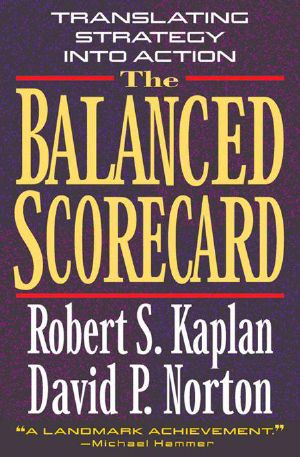The Balanced Scorecard · Translating Strategy Into Action

- Authors
- Kaplan, Robert S. & Norton, David P.
- Publisher
- Harvard Business Review Press
- Tags
- non-fiction , business
- ISBN
- 9780875846514
- Date
- 1996-09-02T06:00:00+00:00
- Size
- 0.62 MB
- Lang
- en
The Balanced Scorecard translates a company's vision and strategy into a coherent set of performance measures. The four perspectives of the scorecard--financial measures, customer knowledge, internal business processes, and learning and growth--offer a balance between short-term and long-term objectives, between outcomes desired and performance drivers of those outcomes, and between hard objective measures and softer, more subjective measures. In the first part, Kaplan and Norton provide the theoretical foundations for the Balanced Scorecard; in the second part, they describe the steps organizations must take to build their own Scorecards; and, finally, they discuss how the Balanced Scorecard can be used as a driver of change.
From Publishers WeeklyAs running a corporate?or government or not-for-profit?enterprise becomes increasingly complicated, more sophisticated approaches are needed to implement strategy and measure performance. Purely financial evaluations of performance, for example, no longer suffice in a world where intangible assets?relationships and capabilities?increasingly determine the prospects for success. Kaplan, a Harvard Business School professor of accounting, and Norton, president of Renaissance Solutions, make a key contribution by describing and illustrating the balanced scorecard, a multidimensional approach to measuring corporate performance that incorporates both financial and non-financial factors. The concept of a balanced scorecard originated in a study group of 12 companies that met throughout 1990; since then, the authors have worked with several companies, including FMC Corporation, Brown Root Energy Services, Mobil and CIGNA, to create scorecards and use them as a systematic means to implement new organizational strategy. Though still in the preliminary stages of development, balanced scorecards could represent the emergence of a new era of management sophistication, in which both the hard and soft variables of work life are taken into account in a rigorous, testable fashion. Kaplan and Norton provide an excellent, though dry, introduction to a new methodology of management. Copyright 1996 Reed Business Information, Inc.
From Library JournalKaplan (accounting, Harvard) and Norton, president of Renaissance Solutions Inc., created the "balanced scorecard" to assist businesses in moving from ideas to action, achieving long-term goals, and obtaining feedback about strategy. The balanced scorecard consists of four sections: clarifying and translating vision and strategy; communicating and linking strategic objectives and measures; planning, setting targets, and aligning strategic initiatives; and enhancing strategic feedback and learning. Because the writing is technically oriented and somewhat detailed, this work is geared toward scholars and high-level business planners. However, its clear organization makes reading and understanding the concepts much easier. Recommended for upper-level and graduate business students and senior practitioners in the strategic-planning field.?Randy Abbott, Univ. of Evansville Libs., Ind.Copyright 1996 Reed Business Information, Inc.